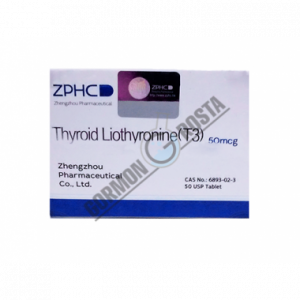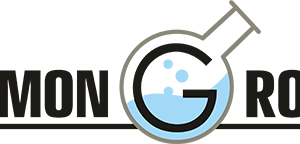Description
New supply – fresh expiration dates (07.23)
Minimum order of 3 blisters.
From 5 blisters with full payment of the order on a bank card – delivery will be carried out at our expense!
Tablets are white or slightly colored, square, flat on both sides and chamfered, with a line and engraving "BP" on one of the sides, with rounded edges.
Liothyronine compensates for the deficiency of thyroid hormones.
Increases the need for tissues in oxygen, stimulates the growth and differentiation of tissues, increases the level of basal metabolism (proteins, fats and carbohydrates). In small doses, it has an anabolic effect, and in large doses, it has a catabolic effect. Inhibits the production of thyroid-stimulating hormone. Enhances energy processes, has a positive effect on the state of the nervous and cardiovascular systems, liver and kidneys.
After oral administration, 95% is absorbed within 4 hours. The latent period is 4-8 hours. In the blood, it binds strongly to proteins. The maximum pharmacological effect occurs after 2-3 days.
INDICATIONS
Hypothyroidism of any origin.
Treatment of thyroid hyperplasia: benign goiter with normal function, prevention of recurrence of goiter after surgery or after radioactive iodine therapy.
As part of the combination therapy of toxic goiter with thyreostatic agents (after achieving drug compensation of metabolic processes).
METHOD OF APPLICATION AND DOSES
inside. In hypothyroid states, 25 mcg / day is prescribed, it is possible to increase the dose by 25 mcg every 1-2 weeks. The maintenance dose is 25–75 mcg.
With myxedema, the initial dose is 5 mcg / day, it increases every 1-2 weeks by 5-10 mcg, when the dose reaches 25 mcg / day, a further increase is made by 5-25 mcg / day every 1-2 weeks. The maintenance dose is 50-100 mcg / day.
With non-toxic goiter, the initial dose (5 mcg / day) is increased by 5-10 mcg every 1-2 weeks. The maintenance dose is usually 75 mcg/day.
CONTRAINDICATIONS
Hypersensitivity, thyrotoxicosis, diabetes mellitus, Addison's disease, adrenal insufficiency, cachexia, ischemic heart disease, pregnancy and lactation.
OVERDOSE
Symptoms: weight loss, increased appetite, palpitations, nervousness, diarrhea, intestinal colic, sweating, tachycardia, arterial hypertension, cardiac arrhythmias, tremors, insomnia, heat intolerance, fever, irregular menstruation.
Treatment: Induced vomiting or gastric lavage (excluding coma, seizures), activated charcoal or cholestyramine to delay drug absorption, beta-blockers (propranolol 1–3 mg intravenously over 10 minutes or more or 80–160 mg orally daily ), cardiac glycosides in congestive heart failure. Fighting fever and hypoglycemia, hypovolemia.
Dialysis is ineffective because the drug is bound to proteins.
PRECAUTIONS AND APPLICATIONS
Use with caution in elderly patients, with lesions of the coronary vessels (CHD), heart failure and with certain forms of cardiac arrhythmias (tachyarrhythmias).
Even mild liothyronine-induced hyperfunction of the thyroid gland must be avoided, especially in cases of insufficient blood supply to the heart (coronary insufficiency), heart failure or tachyarrhythmias.With hypofunction of the thyroid gland caused by damage to the pituitary gland, it is necessary to find out whether there is at the same time insufficiency of the adrenal cortex. In this case, its treatment should be started before the appointment of thyroid hormone therapy.
INTERACTIONS WITH OTHER DRUGS
Increases the effect of oral anticoagulants, vasoconstrictors, reduces – insulin and other hypoglycemic agents. Activity is reduced by oral contraceptives and cholestyramine. Phenytoin, salicylates, dicoumarol, furosemide (in high doses), clofibrate, antidepressants, cardiac glycosides, ketamine increase the concentration and risk of side effects of liothyronine.




Reviews
There are no reviews yet.